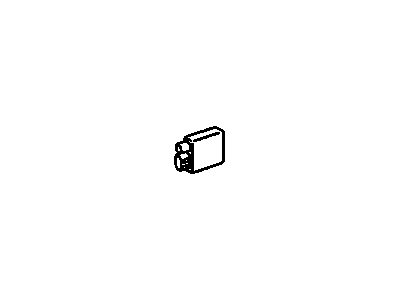

My Garage
My Account
Cart
Genuine Toyota Sienna Igniter
Igniter Starter- Select Vehicle by Model
- Select Vehicle by VIN
Select Vehicle by Model
orMake
Model
Year
Select Vehicle by VIN
For the most accurate results, select vehicle by your VIN (Vehicle Identification Number).
1 Igniter found
Toyota Sienna Igniter Assy
Part Number: 89621-41010$491.26 MSRP: $732.85You Save: $241.59 (33%)Ships in 1-3 Business Days
Toyota Sienna Igniter
If you are in demand for superior quality and affordable OEM Toyota Sienna Igniter, then shop with us! We own a wide range of the reduced-priced genuine Toyota Sienna Igniter. You can purchase in confidence as all parts come with a manufacturer's warranty. Any issues with our products? No need to worry as we have a hassle-free return policy to guide you every step of the way.
Toyota Sienna Igniter Parts Questions & Experts Answers
- Q: How to check the ignition system and diagnose a bad igniter on Toyota Sienna?A:The following procedure does not apply to the integral Ignition Coil/igniter units used on 2001 and later models, as testing the igniter function of these units is beyond the scope of the home mechanic. You can check the ignition confirmation signal of each igniter, but identifying a bad igniter is simply a process of elimination. If you suspect a bad igniter on one of these models, have the ignition coil/igniter unit tested by a dealer service department or a qualified repair shop. When performing the following checks, disconnect the electrical connector from the igniter and conduct electrical checks at the igniter harness connector with the ignition switch On. Check for battery voltage on terminal no. 9; if absent, check the circuit from the igniter to the battery. Check for approximately 5.0 volts at terminal no. 4; if not present, have the PCM checked by a dealership service department or other properly equipped repair facility. Check for a fluctuating 0.1 to 4.5 volt signal at terminal no. 5, 6, and 7 in turn while an assistant cranks the engine; if absent, have the PCM checked. Check for continuity to a good chassis ground at terminal no. 3. If the checks are good, turn the ignition switch Off and reconnect the electrical connector to the igniter. Next, disconnect the electrical connectors at each ignition coil and, using an LED test light, check for an ignition coil trigger signal at each ignition coil connector while an assistant cranks the engine. If no ignition coil trigger signal is present, check the circuits from the igniter to the ignition coils for continuity; if the circuits are good, replace the igniter.



